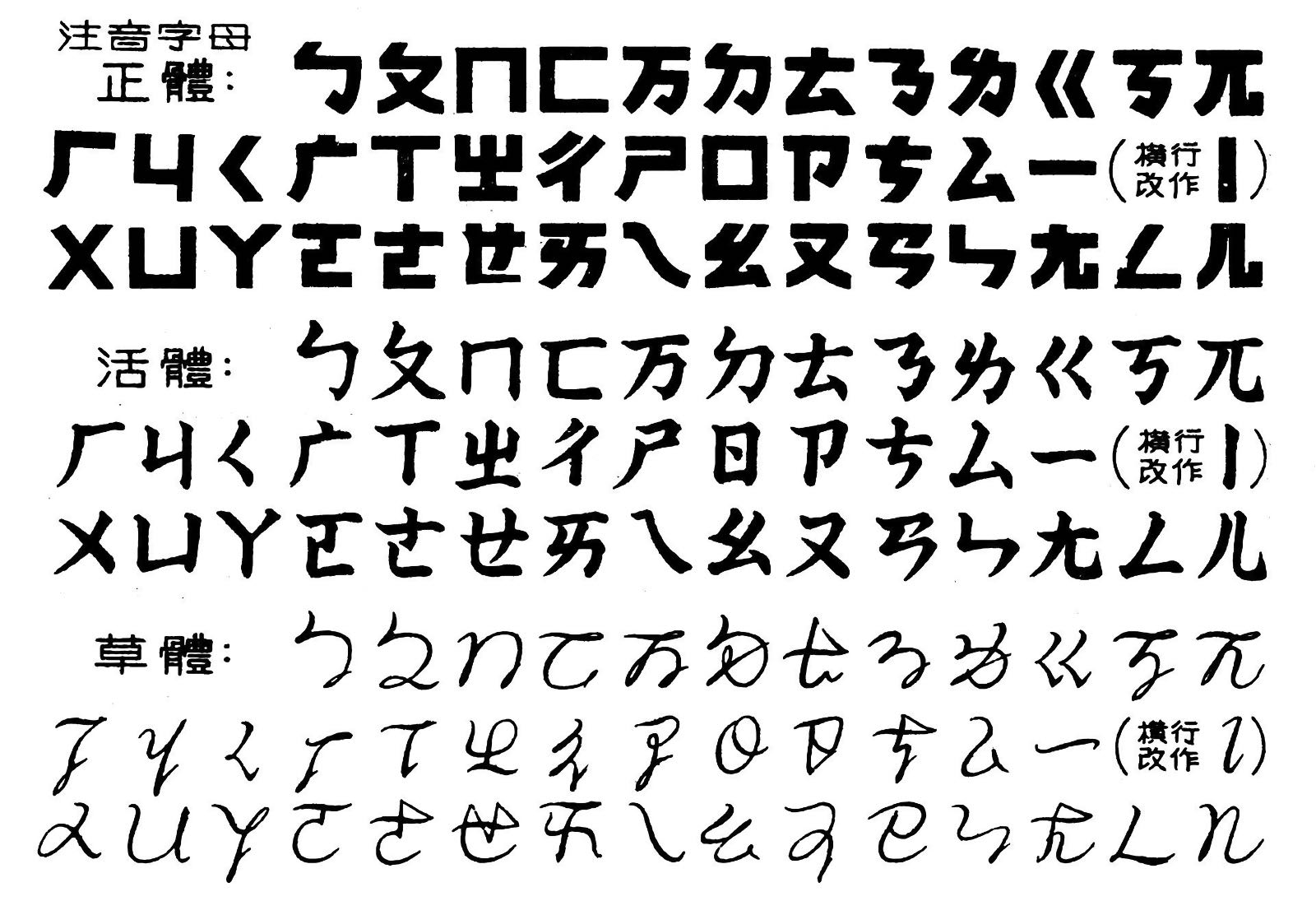zìmǔ (zì·mǔ character; word · mothers → [letters (of an alphabet) [→ [alphabet]]] 字母) ← Tap/click to show/hide the “flashcard”
As previous MEotW posts (like this one) have shown, “zì (character; word; letter 字)” in Mandarin can mean “character”, such that “Hànzì (Hàn·zì {Han (Chinese)} · Characters 汉字 漢字)”, for example, means “Chinese characters”. In fact, even though “zì (character; word; letter 字)”, like its English counterpart “character”, can refer to printed or written letters or symbols in general, Hànzì (Hàn·zì {Han (Chinese)} · Characters 汉字 漢字) are such an 800-pound gorilla in Chinese culture that in Mandarin, “zì (character; word; letter 字)” by itself is often understood to specifically mean the Hànzì (Hàn·zì {Han (Chinese)} · Characters 汉字 漢字), the Chinese characters. This way of thinking has spilled over into the English-speaking world as well, which is why when English-speaking publishers in the Chinese fields speak of “the characters”, that’s generally understood to mean “the Chinese characters”, which in turn is understood to mean the 汉字 and not the Pīnyīn (Pīn·yīn {Piecing Together of} · Sounds → [Pinyin] 拼音), even though Pīnyīn (Pīn·yīn {Piecing Together of} · Sounds → [Pinyin] 拼音) is also Chinese and made up of characters (printed or written letters or symbols).
So, when we want to refer to a letter of an alphabet, as opposed to a Chinese character, when speaking Mandarin, we can make that clear by using this week’s MEotW, “zìmǔ (zì·mǔ character; word · mothers → [letters (of an alphabet) [→ [alphabet]]] 字母)”. In Mandarin, a zìmǔ (zì·mǔ character; word · mothers → [letters (of an alphabet) [→ [alphabet]]] 字母) is literally a “character/word mother”, something that characters or words come from.
How is it that even Chinese characters or words come from letters? Well, contrary to the traditional Chinese cultural view that Chinese characters are the primary aspect of Chinese languages, linguists (language scientists) now recognize that speech is primary and writing is secondary. So, a Mandarin expression is not primarily something written with Chinese characters, but rather is primarily something spoken in Mandarin. Whereas a Chinese character coarsely represents an entire syllable, letters of alphabets in general represent the individual speech sounds (called phonemes by linguists) that make up the spoken expressions that are the primary part of a language, and this is especially true of a purpose-designed phonetic alphabet like Pīnyīn (Pīn·yīn {Piecing Together of} · Sounds → [Pinyin] 拼音).
For example, whereas the Chinese character “字” represents an entire Mandarin syllable as one coarse unit, the Pīnyīn (Pīn·yīn {Piecing Together of} · Sounds → [Pinyin] 拼音) expression “zì (character; word; letter 字)” finely spells out the initial sound, the final sound, and even the tone that actually make up that Mandarin syllable.
That speech and the individual sounds that make it up are the real foundation of any human language is such an important, unignorable linguistic principle that even schoolchildren in China (see especially the Z.T. subheading) learn basic Mandarin speech and Pīnyīn (Pīn·yīn {Piecing Together of} · Sounds → [Pinyin] 拼音) before getting immersed in Hànzì (Hàn·zì {Han (Chinese)} · Characters 汉字 漢字), Chinese characters, as tradition dictates.
Perhaps, then, it would be appropriate for Chinese culture, which values filial piety, to be more respectful towards the letters of its phonetic alphabet Pīnyīn (Pīn·yīn {Piecing Together of} · Sounds → [Pinyin] 拼音), which, both linguistically and educationally, are the “mothers” of the characters it loves so much!
